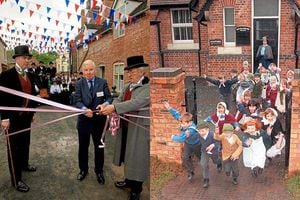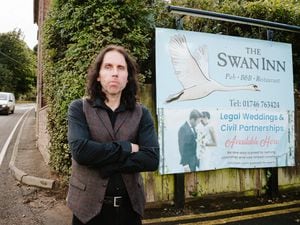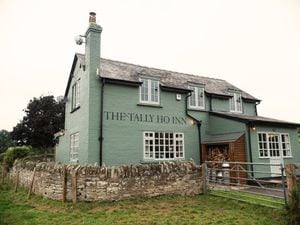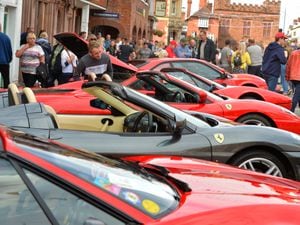Blists Hill: Past illustrated with salvaged buildings
There's a butcher, a baker – and yes, a candlestick maker – along with much else that will look familiar at Blists Hill.

It is the single Ironbridge Gorge Museum site that has done most to forge the museum's identity and generated its success.
For all intents and purposes, it is a time-warp theme park, transporting visitors to a Victorian town with a cast of volunteers in costume going about their business.
Not the Iron Bridge itself then? No, because although the famous bridge is the most iconic image of the Ironbridge Gorge, it does not belong to the museum.
Through the life of the museum, which is this year celebrating its golden jubilee, much has turned on the blossoming of Blists Hill.
Opened to the public in 1973, early visitors to Blists Hill could explore a largely vacant site, conceived as an open air museum.
But gradually the idea evolved of recreating a late 19th century working town, complete with shops, cottages, and work places.
The site started to acquire – lock, stock and barrel – buildings from far and wide, which would otherwise be lost.
They were taken down, brick by brick, and reassembled at Blists Hill.
It has meant buildings, which were familiar to past generations of Salopians, can now be viewed all over and over again in an entirely new setting.
Here are just a few examples:
The Forest Glen Pavilion:
Standing at the foot of The Wrekin, it was a convenient place to start, and end, a walk up the famous landmark and beauty spot.
Built of wood in 1889, it was derelict by the mid 1980s.
It was re-erected at Blists Hill in 1993.
Stirchley Board School:
Opened in June 1881, it closed, according to its last headmistress Mrs Margaret Darlington, at Christmas in 1972 (other sources give 1973), and was taken down in 1989.
Reconstructed at Blists Hill in 1993, modern day schoolchildren can now "enjoy" what school was like in the old days.
Charles Jesse Butchers:
This building dates from before 1871 and used to be only a mile or so away in Waterloo Street, Ironbridge.
W E Lloyd Cobblers:
Brought from Oakengates in 1979.
Lloyds Bank:
A replica of a late 19th century bank in Broseley, where the building still stands.
In fact, while many buildings were dismantled and rebuilt to create Blists Hill Victorian Town, times have changed,.
And these days the new old buildings are just that – replicas of old buildings, rather than threatened old buildings which have been "rescued" and brought to Blists Hill.
This has partly been because a change of mood in which old buildings are more likely to be restored and preserved, so the pool of buildings which might otherwise have been offered to Blists Hill has dried up.
There are also advantages to building replicas, based on "parent" buildings which are still standing, or through studying old photographs to replicate long-disappeared features.
Building from scratch has allowed the museum to reflect the lives of ordinary people by recreating the ordinary buildings in which they lived and worked, and provide a coherent street scene, rather than a hotch-potch.
Blists Hill Victorian Town is one of the 10 Ironbridge Gorge Museums.
The Ironbridge Gorge Museum Trust was established in 1967 to preserve and interpret the remains of the Industrial Revolution in the six square miles of the Ironbridge Gorge. It is an independent educational charity.





